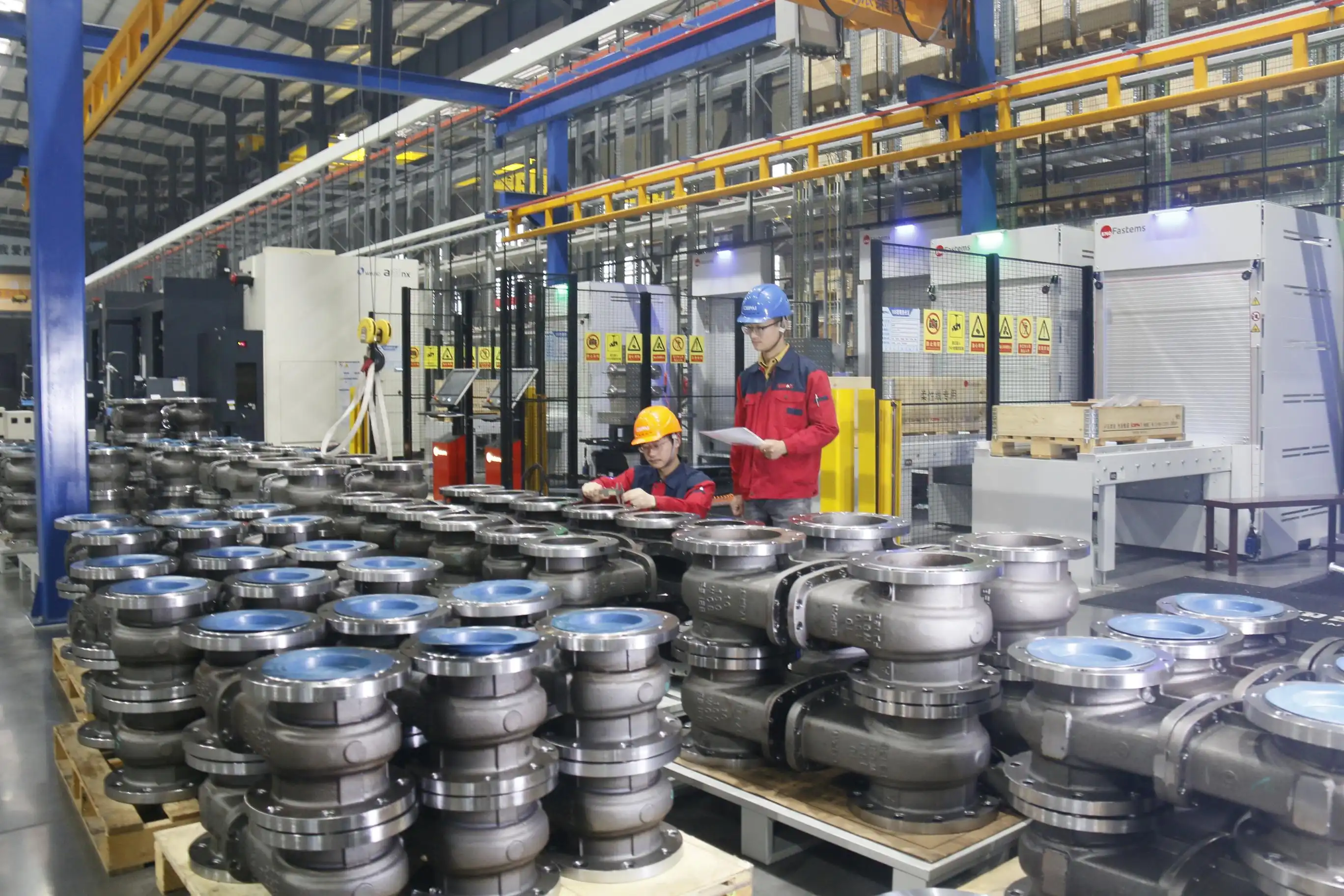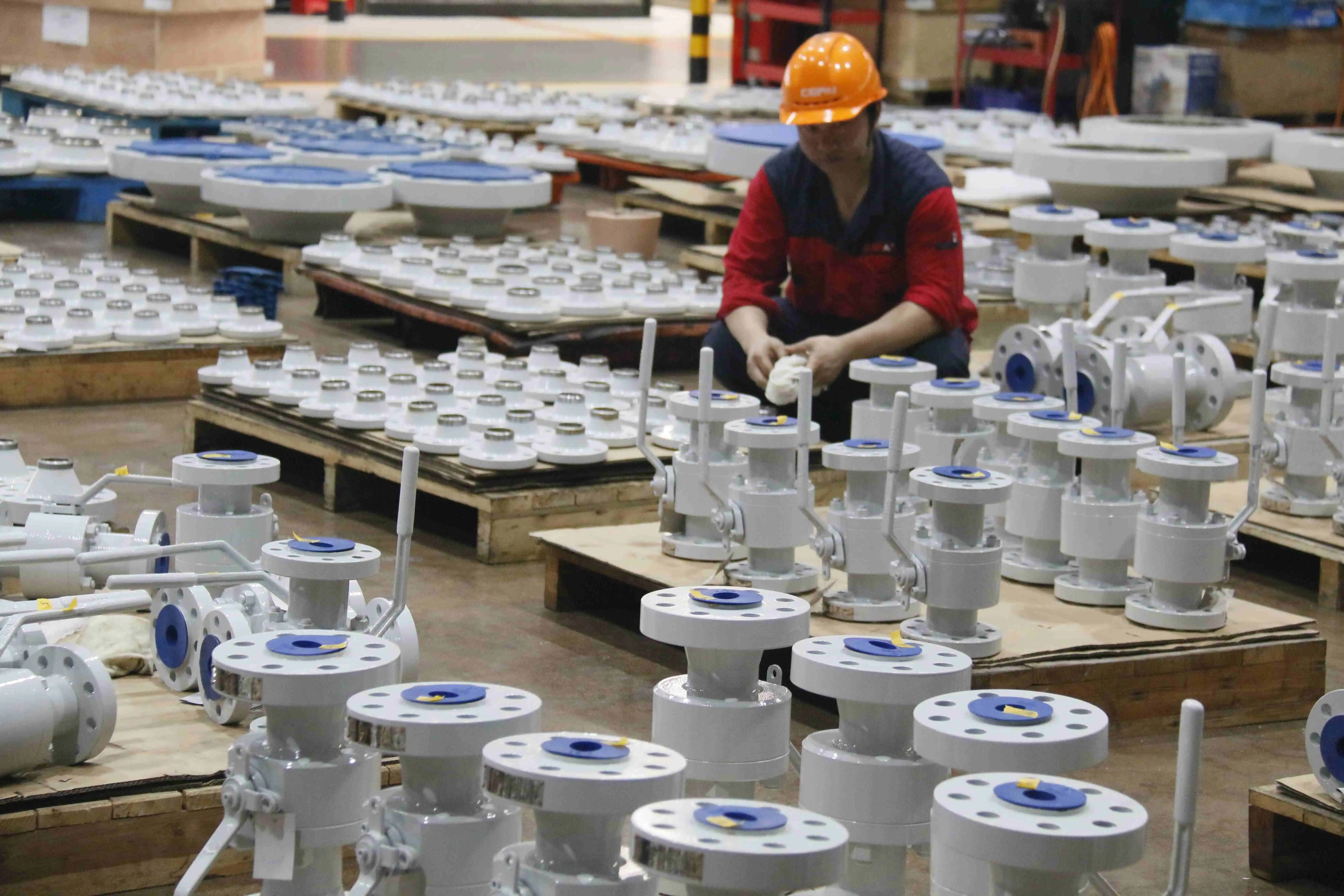Choosing the Right Ball Valve for Pharmaceutical Equipment
In the highly regulated pharmaceutical industry, selecting the appropriate ball valve is crucial for maintaining product integrity, ensuring compliance with stringent safety standards, and optimizing manufacturing processes. The valves required for pharmaceuticals need to meet the characteristics of avoiding cross contamination and easy cleaning. Ball valves have emerged as essential components in pharmaceutical manufacturing due to their exceptional sealing capabilities, hygienic design features, and reliability in critical applications. Understanding the specific requirements for pharmaceutical-grade ball valves enables manufacturers to make informed decisions that protect both product quality and patient safety while maintaining operational efficiency throughout the production cycle.

Essential Material and Design Requirements for Pharmaceutical Ball Valves
FDA-Compliant Materials and Construction Standards
Pharmaceutical ball valve manufacturing demands the highest quality materials that comply with Food and Drug Administration (FDA) regulations and pharmaceutical industry standards. The foundation of any pharmaceutical-grade ball valve begins with premium stainless steel construction, typically utilizing ASTM 316L or 316SS materials that offer superior corrosion resistance and biocompatibility. These materials undergo rigorous testing and certification processes to ensure they meet the strict requirements for direct contact with pharmaceutical products. All valves supplied for pharmaceutical applications must be accompanied by MTR's. Seat material manufacturers provide a composition report to ensure that valve seats meet FDA guidelines. The manufacturing process must incorporate precise machining techniques to achieve the smooth surface finishes essential for preventing bacterial growth and facilitating thorough cleaning protocols.
Hygienic Design Features and Surface Finishing
The design philosophy for pharmaceutical ball valves emphasizes eliminating potential contamination sources through careful attention to surface treatments and geometrical considerations. Internal surfaces require electropolishing to achieve Ra values typically below 0.8 micrometers, creating mirror-like finishes that resist bacterial adhesion and enable complete cleaning validation. Ball valve bodies must feature crevice-free designs with smooth transitions between components, eliminating dead spaces where contaminants could accumulate. The ball itself requires precision grinding and polishing to ensure perfect spherical geometry, while the seats utilize FDA-approved polymeric materials such as PTFE, RTFE, or TFM that provide reliable sealing performance without compromising product purity. These design elements work synergistically to create ball valves that can withstand aggressive cleaning agents and sterilization procedures without degrading performance or introducing contaminants into the pharmaceutical manufacturing process.
Traceability and Documentation Requirements
Comprehensive documentation and material traceability represent fundamental requirements for pharmaceutical ball valve applications, supporting quality assurance programs and regulatory compliance initiatives. Each valve component must include detailed material test reports (MTRs) that document chemical composition, mechanical properties, and surface finish measurements. Manufacturing documentation should encompass heat treatment records, pressure testing results, and dimensional inspection reports that verify compliance with design specifications. The traceability system must extend throughout the entire supply chain, from raw material procurement through final assembly and testing. This documentation framework enables pharmaceutical manufacturers to demonstrate compliance with Good Manufacturing Practice (GMP) requirements and facilitates rapid response to quality investigations or regulatory inquiries. Advanced manufacturers like CEPAI Group maintain sophisticated quality management systems that provide complete product lifecycle documentation, ensuring that every ball valve delivered meets the exacting standards required for pharmaceutical applications.
Critical Performance Characteristics for Pharmaceutical Applications
Sterility and Cleanability Features
Pharmaceutical ball valves must demonstrate exceptional cleanability and sterilization compatibility to maintain the sterile environment essential for drug manufacturing. The valve design should incorporate smooth, continuous internal surfaces that eliminate potential harboring sites for microorganisms and facilitate complete removal of product residues. Steam sterilization capability represents a critical requirement, with valves needing to withstand repeated exposure to saturated steam at temperatures up to 138°C (280°F) without compromising sealing performance or material integrity. Clean-in-place (CIP) and sterilize-in-place (SIP) compatibility ensures that ball valves can be effectively cleaned and sanitized without disassembly, reducing contamination risks and minimizing downtime. The ball valve actuator and stem sealing systems must maintain integrity throughout these aggressive cleaning cycles while providing reliable operation. Advanced pharmaceutical ball valves incorporate features such as self-draining designs and minimal hold-up volumes that enhance cleaning effectiveness and reduce cross-contamination potential between different product batches.
Precise Flow Control and Pressure Management
Accurate flow control capabilities distinguish pharmaceutical-grade ball valves from standard industrial applications, requiring precise response characteristics and repeatable performance. The ball valve must deliver consistent flow coefficients (Cv) across its operating range, enabling accurate dosing and mixing operations critical for pharmaceutical formulations. Pressure ratings must accommodate system requirements while maintaining safety margins, typically ranging from 150 PSI to 600 PSI depending on the specific application. The valve actuator system, whether manual or automated, should provide smooth operation with minimal torque requirements to prevent stress on piping systems and ensure operator safety. Response time characteristics become particularly important in automated pharmaceutical processes where rapid shut-off capabilities may be required to prevent product loss or contamination. Ball valves used in pharmaceutical applications must demonstrate low dead volumes to minimize product waste and cross-contamination potential, particularly important in high-value drug manufacturing where material costs can be substantial.
Temperature and Chemical Compatibility
Pharmaceutical manufacturing processes expose ball valves to diverse temperature ranges and chemical environments that demand exceptional material compatibility and thermal stability. Operating temperatures may range from cryogenic conditions for certain active pharmaceutical ingredients (APIs) to elevated temperatures during synthesis reactions or sterilization procedures. The ball valve materials must maintain their mechanical properties and sealing effectiveness across these temperature extremes without degrading or releasing extractable substances that could contaminate pharmaceutical products. Chemical compatibility encompasses resistance to acids, bases, solvents, and cleaning agents commonly used in pharmaceutical manufacturing. The polymeric seat materials require particular attention to chemical resistance, with manufacturers conducting extensive compatibility testing to verify performance with specific pharmaceutical formulations. Thermal cycling resistance ensures that repeated temperature changes during production and cleaning cycles do not compromise valve integrity or introduce leakage paths that could affect product quality.
Advanced Technologies and Industry Standards Compliance
Smart Valve Technologies and Automation Integration
Modern pharmaceutical manufacturing increasingly relies on advanced automation systems that require sophisticated ball valve technologies capable of seamless integration with process control infrastructure. Smart ball valves incorporate position feedback systems, diagnostic capabilities, and communication protocols that enable real-time monitoring and control of valve performance. These technologies provide valuable insights into valve health, allowing predictive maintenance strategies that minimize unplanned downtime and ensure consistent product quality. Integration with Manufacturing Execution Systems (MES) and Enterprise Resource Planning (ERP) platforms enables comprehensive batch tracking and quality documentation that supports regulatory compliance requirements. Automated ball valves must demonstrate precise position control, repeatable performance, and fail-safe operation modes that protect both personnel and product integrity. The integration of Industry 4.0 technologies, such as IoT sensors and cloud-based monitoring systems, transforms traditional ball valves into intelligent components that contribute to overall pharmaceutical manufacturing efficiency and quality assurance programs.
Regulatory Compliance and Industry Certifications
Pharmaceutical ball valves must meet multiple regulatory standards and industry guidelines that ensure product safety and manufacturing quality. FDA compliance encompasses material requirements, manufacturing practices, and documentation standards that validate the valve's suitability for pharmaceutical contact applications. ASME BPE (Bioprocessing Equipment) standards provide specific guidelines for hygienic design, surface finish requirements, and testing procedures that pharmaceutical ball valves must satisfy. European pharmaceutical manufacturers must ensure compliance with EU GMP requirements and relevant harmonized standards that govern equipment used in drug production. The validation process for pharmaceutical ball valves includes installation qualification (IQ), operational qualification (OQ), and performance qualification (PQ) protocols that demonstrate the valve meets its intended performance specifications. Manufacturers like CEPAI Group maintain comprehensive certification portfolios including ISO 9001 quality management systems, CE marking, and specialized certifications such as SIL (Safety Integrity Level) ratings that demonstrate commitment to pharmaceutical industry requirements and international quality standards.

Innovation and Future Trends in Pharmaceutical Valve Technology
The pharmaceutical valve industry continues evolving through technological innovations that address emerging manufacturing challenges and regulatory requirements. Advanced materials research focuses on developing next-generation polymers and surface treatments that offer enhanced chemical resistance, reduced extractables, and improved cleaning validation capabilities. Miniaturization trends in pharmaceutical manufacturing drive demand for smaller ball valves with maintained performance characteristics, requiring innovative design approaches and precision manufacturing techniques. Digital transformation initiatives in pharmaceutical manufacturing create opportunities for ball valves with enhanced connectivity, predictive analytics capabilities, and integration with artificial intelligence systems that optimize process performance. Sustainability considerations influence valve design decisions, with manufacturers developing solutions that reduce energy consumption, minimize waste generation, and support circular economy principles. The convergence of biotechnology and traditional pharmaceutical manufacturing creates new requirements for ball valves that can handle complex biological products, cell cultures, and advanced therapeutic formulations while maintaining the sterile environment essential for these sensitive applications.
Conclusion
Selecting the appropriate ball valve for pharmaceutical equipment requires careful consideration of material compatibility, hygienic design features, regulatory compliance, and long-term performance requirements. The pharmaceutical industry's demanding environment necessitates ball valves that deliver exceptional reliability, cleanability, and precision while meeting stringent safety standards. Selecting the right valves for pharmaceutical manufacturing requires understanding the specific requirements of each application and matching them with the appropriate valve technology. CEPAI Group Co., Ltd., as a leading China Ball Valve manufacturer and China Ball Valve supplier, brings over fifteen years of expertise in high-precision valve manufacturing to pharmaceutical applications. Our state-of-the-art intelligent manufacturing facility, spanning 56,000 square meters with advanced testing capabilities and CNAS-accredited laboratories, ensures every Ball Valve for sale meets the highest quality standards. As a trusted China Ball Valve factory and China Ball Valve wholesale provider, we offer competitive Ball Valve price points without compromising on quality or compliance requirements. Whether you need standard pharmaceutical ball valves or customized solutions for specialized applications, our technical team provides comprehensive pre-sales consultation, installation support, and ongoing maintenance services. Contact our experts today at cepai@cepai.com to discuss your pharmaceutical ball valve requirements and discover how CEPAI's innovative solutions can enhance your manufacturing processes while ensuring regulatory compliance and operational excellence.

References
1. Smith, J.R., & Johnson, M.K. (2023). Pharmaceutical Valve Design Principles and Material Selection Criteria. Journal of Pharmaceutical Engineering, 45(3), 78-95.
2. Anderson, L.P., Martinez, C.D., & Chen, W.L. (2024). Regulatory Compliance in Pharmaceutical Manufacturing Equipment: A Comprehensive Analysis. International Pharmaceutical Technology Review, 38(2), 112-128.
3. Thompson, R.A., Williams, S.M., & Brown, D.J. (2023). Advanced Materials for Hygienic Valve Applications in Biotechnology and Pharmaceutical Industries. Materials Science and Engineering in Pharmaceuticals, 29(4), 201-218.
4. Davis, K.N., Kumar, P.S., & Roberts, M.E. (2024). Quality Assurance Protocols for Critical Pharmaceutical Manufacturing Equipment. Pharmaceutical Quality Assurance Quarterly, 51(1), 45-62.
_1746598568348.webp)
Get professional pre-sales technical consultation and valve selection services, customized solution services.

About CEPAI


